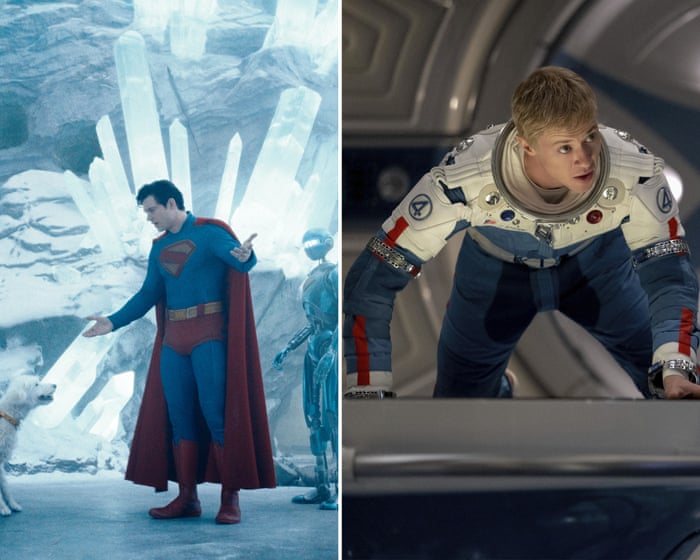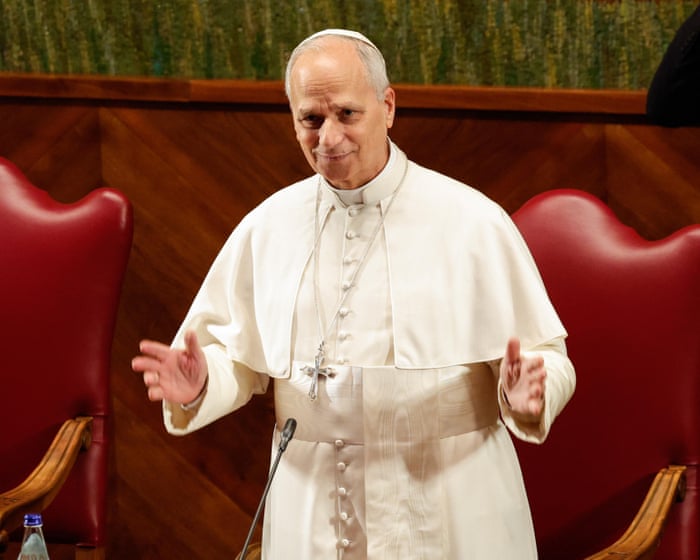We’ve been hearing a lot about our longing for a “return to optimism.” Our world has felt too harsh for too long, and we’re all craving some relief from the storm.
We look back with nostalgic fondness at Obama’s “Hope” poster, much like how we claim music hasn’t been “real music” since the ’80s—or the ’60s, or the Great American Songbook, or Mozart, depending on who you ask.
Movie theaters are propped up by two massive franchises: DC’s latest Superman and Marvel’s Fantastic Four reboot, both trying to reset their biggest properties. It’s a return to the originals—what we call the “good old days.” But this isn’t so much a desire for new optimism as it is an attempt to revive an old one. The Fantastic Four even takes place in a retro-futuristic 1960s world (the original comic debuted in 1961).
Remember this? This is Things As They Should Be™.
The irony is that these old aesthetics were once forward-looking. The space age brimmed with joy and optimism, celebrating the wonders of science and technology—before we realized those same industries would eventually choke our planet. We want to go back to that time, when we could enjoy our shiny bubble cars and big hair without worrying about the ozone layer.
But this feels like a copy of a copy. The AI boom is just remixing what already exists.
That collective optimism was never real, of course. Yet after decades of doom-filled stories and fading hope, we want the dream back.
What’s happening in culture isn’t just harmless nostalgia—1950s diners, Wild West filters, theme park recreations. It’s a desperate, almost tragic attempt to revive dead worlds, built on a hollow longing that can never be satisfied.
We’re like birds eating our own regurgitated food—same taste, different color; different taste, same chunks. It looks inspiring, but it reeks of grief. It works, but not quite—like microwaved leftovers.
It’s the cultural version of MAGA—the lie that there was some golden past where everything was perfect, and if we just return there, we’ll be okay again. But that past never existed. It’s a mix of childhood nostalgia and corporate-driven historical revision.
This is the “multiverse” brought to life by a shrinking group of conglomerates recycling their old hits to avoid risk. It’s not a multiverse—it’s an IP-verse. Every brand, everywhere, all at once.
Over time, it starts to feel like a faded photocopy. AI just samples and recycles what’s already been done.
When I see a new building inspired by 1920s Art Deco, I wonder: Did those designers know they were on the edge of the future, or were they just copying their own nostalgic past? As design trends keep reviving “vintage” styles, what did “vintage” even mean to people when those styles were new?
Having lost faith in the future, we turn to the past for comfort. But we should question why.
Why did Nazi aesthetics idolize ancient Rome? Why did Soviet culture glorify industrial modernism? Even in The Handmaid’s Tale, Gilead romanticizes “natural” foods. The world around us reflects our beliefs.
We’re all vulnerable to this myth-making. It’s invisible but everywhere—and dangerous.It’s hard to know whether those in power are trying to shape the world to fit their ideals or if it’s just a natural, unguided process. We all long for a better time from the past because the future seems out of reach. We’ve stopped imagining how to build something new—now we only dream of rebuilding what once was.
What we really want isn’t to recreate the past itself, but to recapture the way it made us feel.
In my city center, I pass heritage-listed sandstone buildings with the names of old shopfronts still carved above them. The mason who chiseled those dates into the stone did it for the future, so his mark would endure—even as I speed past in a machine he could never have imagined.
Picture a shopfront labeled something like “Nolan and Sons Merchants, est. 1861.” And below it, printed in a faux-vintage font on a plastic awning: “Buzz’d Cafe, est. 2025.”
Smash through the café’s wall. Behind the fake brick-patterned wallpaper, you’ll find sterile plasterboard from the last renovation, which itself was just another layer covering the original brick.
You can see this pattern everywhere—layer upon layer of people trying to make their mark, either by covering up the past or reviving it.
So, do we cling to the comforting myths of yesterday, or do we dare to invent new ones?
Martin Ingle is a writer and filmmaker.




